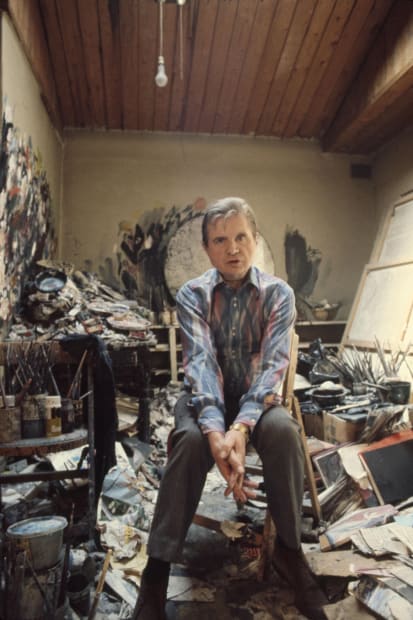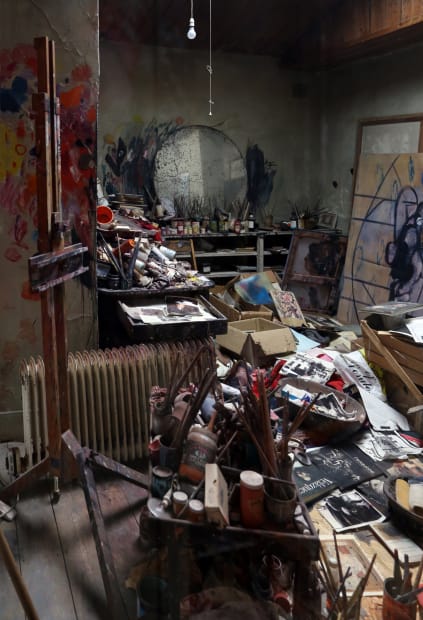-

Francis Bacon in his studio in London in 1974.
©Francis Bacon, ©Alamy, commercial license
-
Later life
Isolation, reflection, mortality. -
 Panel two of 'Three Studies for a Portrait of George Dyer', 1963
Panel two of 'Three Studies for a Portrait of George Dyer', 1963Oil on canvas,Triptych: Each panel: 14 x 12 in. (35.5 x 30.5 cm)
©The Estate of Francis Bacon, Images repoduced for educational purposes only -
“I think of life as meaningless, but we give it meaning while we exist.”
- Francis Bacon
Bacon rejected the idea that his paintings carried fixed meanings or narratives. When questioned by Melvyn Bragg in 1985 about Triptych, May–June 1973, he admitted it was “the nearest I’ve ever done to a story, because you know that is the triptych of how he [Dyer] was found”, acknowledging its connection to George Dyer’s death. He explained that the work reflected not only that loss but also the deaths of many friends, “dying like flies” around him. This period of grief led to a series of introspective self-portraits, often marked by symbols of time and mortality, including the recurring image of a watch, a subtle reference to both ageing and identity. -
Bacons Studio
Frozen in time -
 Image of Bacon's studio in Dublin, which has been preserved©Sailko, CC BY 3.0 , via Wikimedia Commons
Image of Bacon's studio in Dublin, which has been preserved©Sailko, CC BY 3.0 , via Wikimedia Commons





